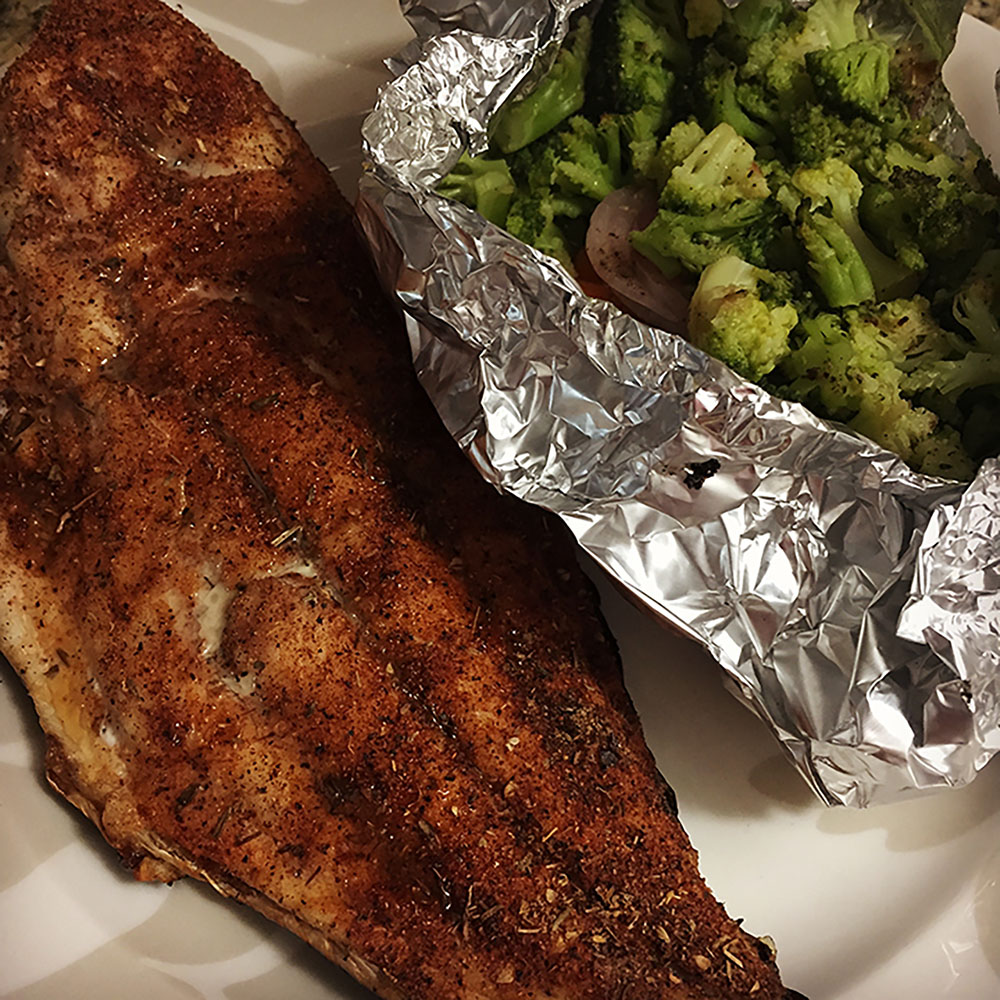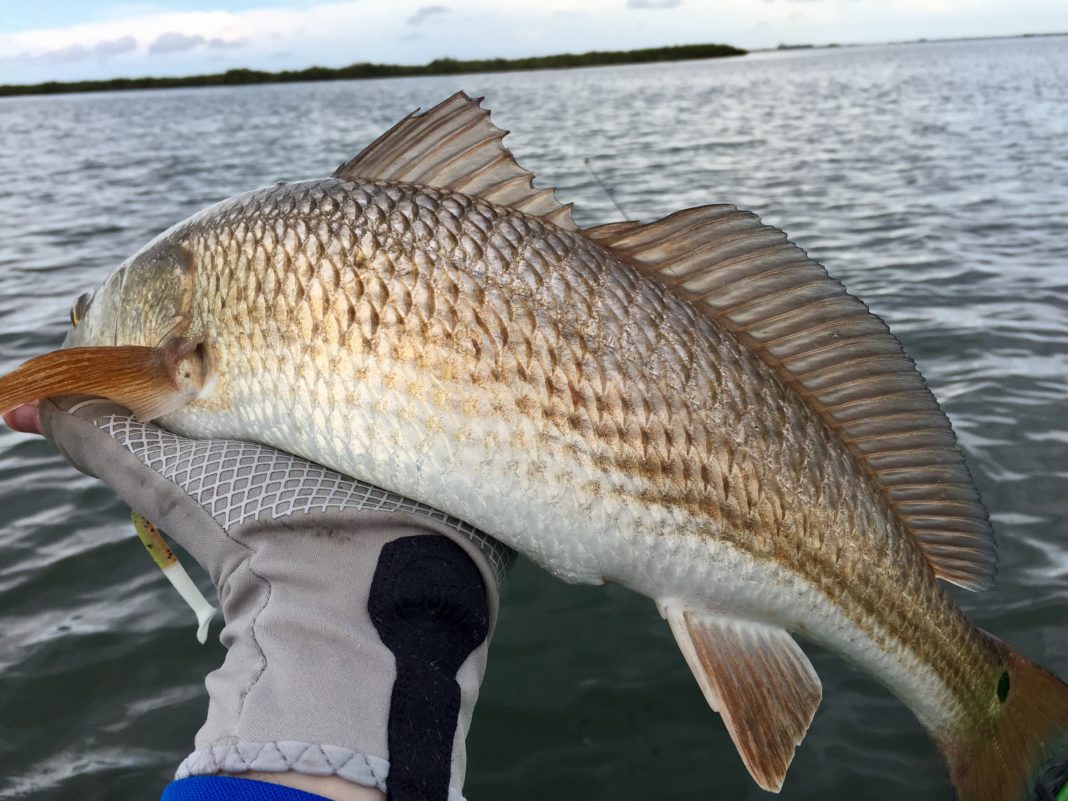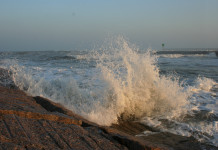Legendary Cajun chef Paul Prudhomme’s lasting legacy and gifts to the culinary history of the South include many mouth-watering recipes that are regularly in use today.
However, Prudhomme — who passed away at age 75 in 2015 — is likely most remembered and revered for one signature dish: blackened redfish.
Prudhomme’s cooking prowess isn’t to blame for the “Redfish Wars” in Texas and other Gulf states in the 1970s and 1980s, but it sure put redfish squarely at the forefront of commercial anglers’ efforts to quench a growing appetite. You could say that Prudhomme’s art of the blackened redfish — dousing the tasty fish fillets in butter, herbs and spices, and charring them in a white-hot cast-iron skillet — actually helped conservation efforts in the long run by shining a spotlight on overfishing.
First, a little history lesson on redfish in Texas and the Gulf coast.
Up until 1981, when House Bill 1000 officially designated redfish and speckled trout as “game fish” — and therefore illegal to sell if harvested from Texas waters — the species were sucked up in nets by the truckload in the bays, passes and inlets along the Lone Star State’s massive coastline. Included in that haul was the bycatch of illegal gill netting that ran rampant. There’s unlikely anyone could accurately quantify just how many millions of pounds of fish were brought in each year, but it nearly wiped out the overall redfish stock.
Redfish were especially desirable due to the increase in Cajun cooking and other recipes that put the tasty catch on the map for good.
Leading up to the “Redfish Bill,” and reaching a fever pitch in 1977 with the founding of the Gulf Coast Conservation Association (today known as the Coastal Conservation Association), the Redfish Wars pitted commercial anglers and recreational anglers against one another, making for tense situations on the water and back at the docks. There were numerous threats of violence, vandalism of boats and other property, and even arson, proving that messing with a man’s livelihood can be downright dangerous.
By most accounts, the redfish is the most valuable and prized saltwater species from the tip of the Mexican border with Texas all the way to the meandering Florida coast. They really are a species all to themselves, and that’s a great thing.
Today you can find them everywhere that holds even a few inches of saltwater in Texas and they can be caught through multiple means and methods — from sight fishing skinny seagrass haunts with fly tackle to drifting oyster flats with shrimp and popping corks. You can catch them from a boat or kayak, from the Gulf of Mexico’s surf and especially wading during spring and summer as the temperatures rise.
The ubiquitous redfish is so revered that in 2011 is was declared Texas’ official saltwater fish by the state Legislature.
The text of House Concurrent Resolution No. 133 pretty well sums up why the redfish is king:
- “WHEREAS, Also known as the redfish and the bull red, this majestic saltwater fish spends the first three years of its life in bays along the coast before heading into the open waters of the Gulf of Mexico; it also demonstrates the hardiness and adaptability so often found in the Lone Star State, swimming up rivers on occasion and also taking up residence in certain inland reservoirs; and
- “WHEREAS, Perhaps the most distinctive characteristic of the fish is its Texas-sized stature; at three years of age, the typical red drum is two-and-a-half feet long and will grow larger over the course of its long life; the biggest red drum caught in Texas waters was 54.25 inches long and weighed nearly 60 pounds; and
- “WHEREAS, The fish’s size, along with its power, speed, and delicious flavor, has made it one of the most popular game species in Texas waters; whether wading through the shallows, casting with fly rods, or trying their luck in pier or surf fishing, anglers of all types prize the red drum as a catch; as a result, the fish plays an important role in boosting recreational tourism; and
- “WHEREAS, An environmental success story as well as an awe-inspiring and much-sought-after resident of the Gulf Coast waters, the red drum is a celebrated member of our natural world, and it is indeed a fitting symbol of the Lone Star State.”
While the fate of the redfish in Texas and other Gulf states may have been spotty at best decades ago, it has never been brighter than it is today. After altering the regulations in the early 1980s, the redfish population took off and then rebounded after a pair of fish-killing freezes in Texas later in the decade.
Today we Texans have it good when it comes to redfish, so go ahead, keep a few for dinner!
 Redfish on the half shell
Redfish on the half shell
Ingredient List
4 to 6 redfish fillets with skin and scales on (one keeper-size fillet is good for one person)
6 tablespoons olive oil
2-3 lemons, halved
salt and pepper to taste
*Paul Prudhomme’s Blackened Redfish Magic seasoning blend (You also can use fresh chopped herbs such as basil, mint or parsley in place of an all-in-one blend; there’s also Tony Chachere’s line of seafood spices that work great)
*Compound butter mixture with the fresh herbs (optional, in place of olive oil or in addition to oil)
Instructions
- Preheat your outdoor grill.
- Take your redfish fillets (with skin/scales still on one side) and drizzle/brush with olive oil. Sprinkle your seasoning mixture and salt and pepper on top of the oil.
- Grill the fish, flesh side down, over medium-high heat for 2 minutes.
- Flip the fillet so the scales are on the grilling surface and cook for another 5 to 7 minutes, or until cooked through to your liking.
- Squeeze a lemon half over each fillet. You also can spoon the compound butter mixture on top as well.
- Spoon out the flesh that should release easily from the skin and serve!




















